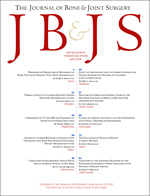
A Randomized clinical Trial Comparing Open and Arthroscopic Stabilization for Recurrent Traumatic Anterior Shoulder Instability Two-Year Follow-up with Disease-Specific Quality-of-Life Outcomes
Nicholas G.H. Mohtadi, MD, MSc, FRCSC, DeniseS.Chan, MBT,MSc, Robert M.Hollinshead,MD,FRCSC, Richard S.Boorman,MD,MSc,FRCSC, Laurie A.Hiemstra,MD,PhD,FRCSC, Ian K.Y.Lo,MD,FRCSC, Heather N. Hannaford, BKin, Jocelyn Fredine,BKin,CAT(C), Treny M. Sasyniuk,MSc, and Elizabeth Oddone Paolucci,PhD
Investigation performed at the University of Calgary Sport Medicine Centre, Calgary, Alberta, Canada
THE JOURNAL OF BONE & JOINT SURGERY-American VOLUME 96- MARCH,2014
J Bone Joint Surg Am. 2014; 96: 353-60
Background:
- The surgical approach to recurrent shoulder instability is still debatable with both open and arthroscopic reconstructions having their own advantages.
- Open repair has been shown to cause fewer recurrences, while arthroscopic repairs claim to be associated with faster rehabilitation and better function.
Design:
- This is a randomized level I trial with expertise based randomization (the expertise of surgeons performing the surgery in both groups were also accounted for and matched) comparing patient based quality of life outcome measures following open and arthroscopic anatomic repairs for recurrent anterior shoulder instability.
Methods:
- 196 patients were randomized into 2 groups (open – 98, arthroscopic – 98). Patients with glenoid fractures and bony Bankart lesions were excluded.
- All patients underwent suture anchor fixation of the capsulolabral complex and/or capsular plication for capsular redundancy.
- Identical postoperative rehabilitation protocols were followed in both groups.
- Outcome measures: WOSI (Western Ontario shoulder instability index) was used as the primary outcome measure.
- Secondary measures include the ASES (American shoulder and elbow surgeons scale) and clinical evaluation to quantify forward flexion and external rotation.
- All assessments were performed at 3, 6 months, 1 and 2 years postoperatively and compared between 2 groups.
- Statistical analysis was also used to compare recurrences and to predict independent risk factors for recurrence.
Results:
- 79 patients in the open group and 83 patients in the arthroscopic group were available for follow up. All outcome measures (WOSI, ASES and ROM) improved significantly at 2 years within each group but the difference was not significant between groups.
- The recurrence rate was significantly high in the arthroscopic group 23% compared to 11% in the open group (P = 0.05).
- Arthroscopic surgery was faster 61± 15 min compared to 77 ± 21 min in the open group (P = 0.002). Open surgery had more adverse events but the difference was not significant. Males, age < 25 years, presence of a Hill-Sach lesion and arthroscopic surgery were all independent risk factors for experiencing a recurrence.
Conclusions:
- Outcomes at 2 years following open and arthroscopic stabilization for recurrent anterior shoulder instability are similar.
- Arthroscopic surgery is associated with significantly higher rates of recurrence at 2 years.
Recommendations: Open surgery may be advantageous in younger male patients with a Hill-Sach lesion.
Ref
1. Journal of Bone and Joint Surgery American Vol, March 5, 2014
Submitted by Dr Ashok S Gavaskar
Leave a Reply